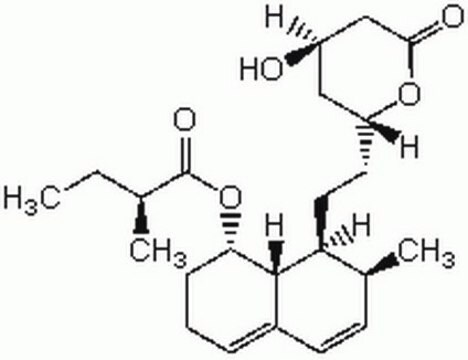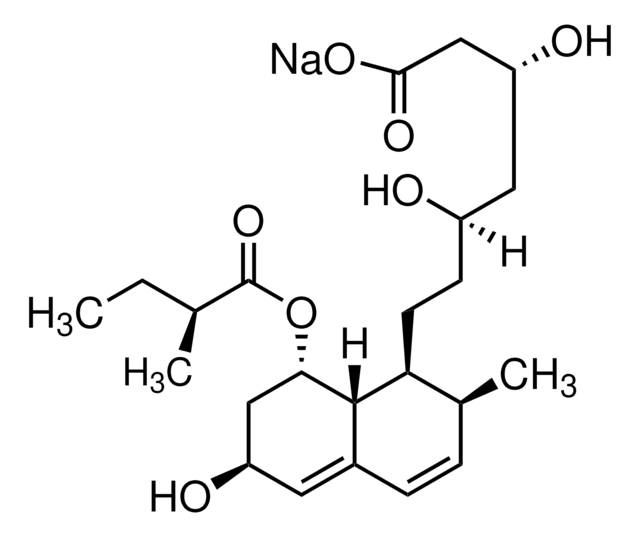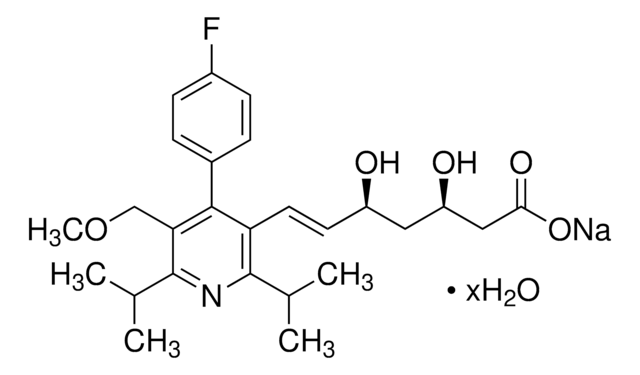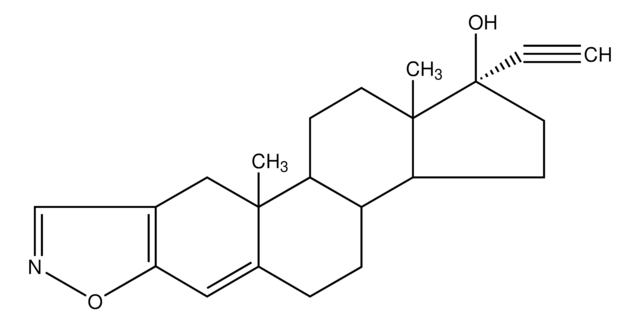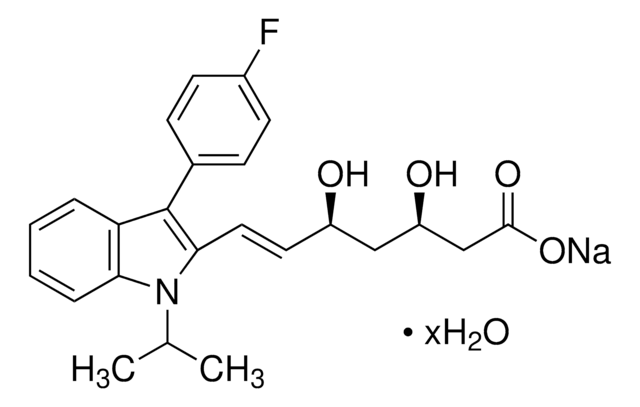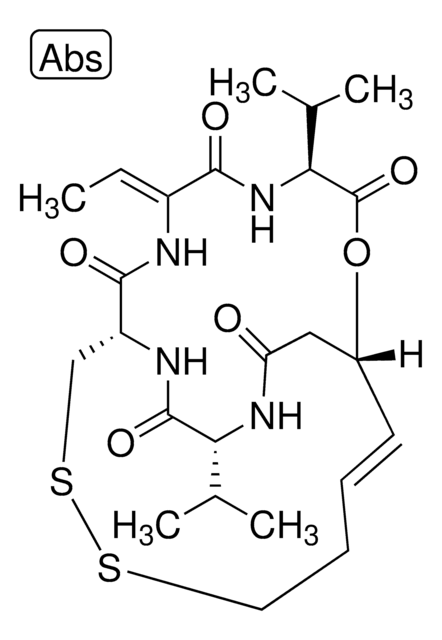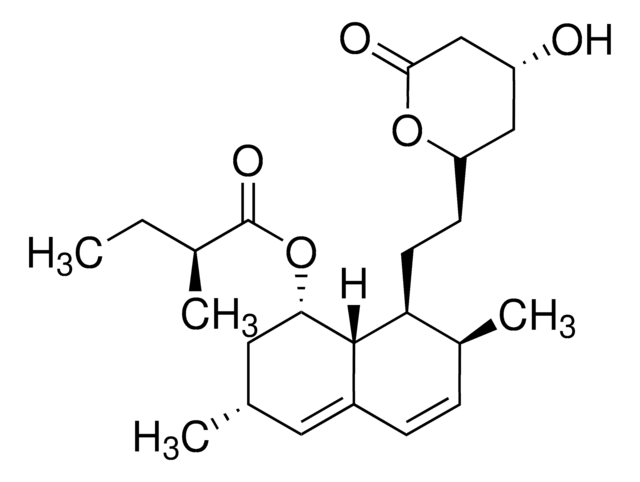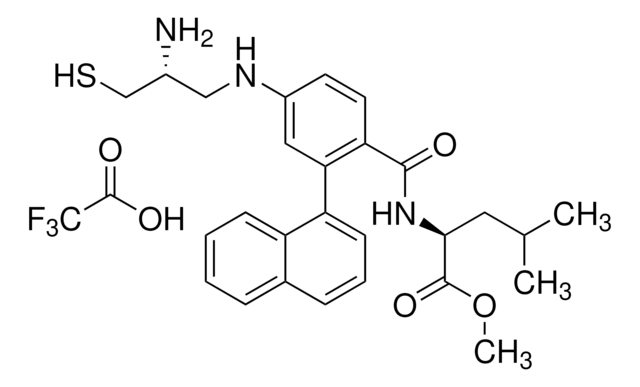M2537
Mevastatin
≥98% (HPLC), powder or crystals
Synonym(s):
Compactin, ML-236B
About This Item
Recommended Products
Quality Level
Assay
≥98% (HPLC)
form
powder or crystals
color
white to light yellow
mp
151 °C
solubility
ethanol: 25-26 mg/mL, clear, colorless
antibiotic activity spectrum
neoplastics
Mode of action
enzyme | inhibits
originator
Daiichi-Sankyo
storage temp.
2-8°C
SMILES string
[H][C@]12[C@H](CCC=C1C=C[C@H](C)[C@@H]2CC[C@@H]3C[C@@H](O)CC(=O)O3)OC(=O)[C@@H](C)CC
InChI
1S/C23H34O5/c1-4-14(2)23(26)28-20-7-5-6-16-9-8-15(3)19(22(16)20)11-10-18-12-17(24)13-21(25)27-18/h6,8-9,14-15,17-20,22,24H,4-5,7,10-13H2,1-3H3/t14-,15-,17+,18+,19-,20-,22-/m0/s1
InChI key
AJLFOPYRIVGYMJ-INTXDZFKSA-N
Gene Information
human ... HMGCL(3155) , HMGCR(3156)
rat ... Hmgcr(25675)
Looking for similar products? Visit Product Comparison Guide
General description
Application
- to analyze its effects on chronic lymphocytic leukemia (CLL) cells by cytotoxic assay
- as a prenylation inhibitor to analyze its effects on human embryonic kidney (HEK) cells transfected with K-Ras
- as a statin agent to study its anti-cancer effect on human breast cancer cells and glioblastoma in vitro
Biochem/physiol Actions
Features and Benefits
Packaging
Storage Class Code
11 - Combustible Solids
WGK
WGK 3
Flash Point(F)
Not applicable
Flash Point(C)
Not applicable
Personal Protective Equipment
Certificates of Analysis (COA)
Search for Certificates of Analysis (COA) by entering the products Lot/Batch Number. Lot and Batch Numbers can be found on a product’s label following the words ‘Lot’ or ‘Batch’.
Already Own This Product?
Find documentation for the products that you have recently purchased in the Document Library.
Customers Also Viewed
Articles
Terpenes comprise the largest and most diverse class of secondary metabolites; approximately 55,000 compounds have been identified to date.
The amount of cholesterol that is synthesized in the liver is tightly regulated by dietary cholesterol levels. LDL receptors regulate the cellular transport of lipid rich low density lipoprotein (LDL) particles.
Randomized controlled clinical studies have suggested 3-hydroxy-3-methylglutaryl coenzyme A (HMG-CoA) reductase inhibitors (statins) are effective in both primary and secondary prevention of cardiovascular disease (CVD) events.
Our team of scientists has experience in all areas of research including Life Science, Material Science, Chemical Synthesis, Chromatography, Analytical and many others.
Contact Technical Service
